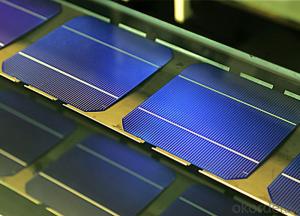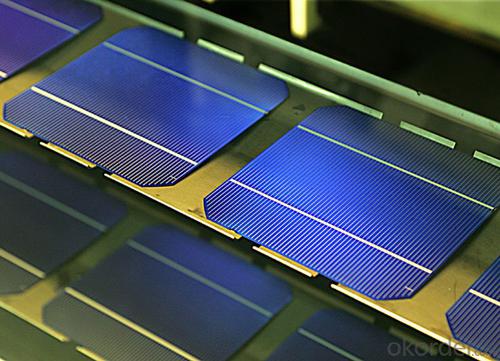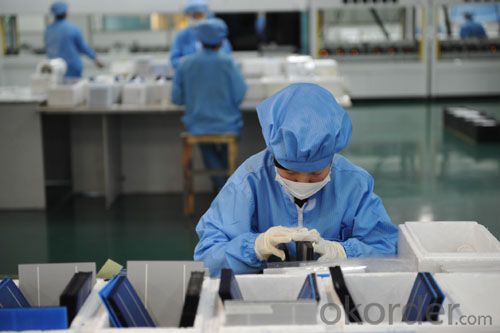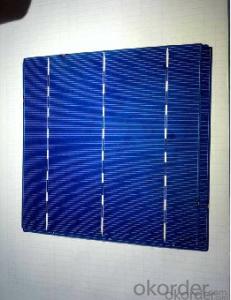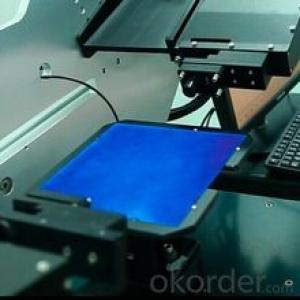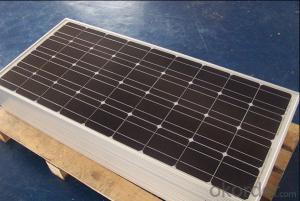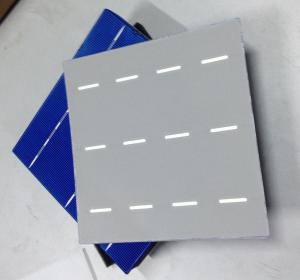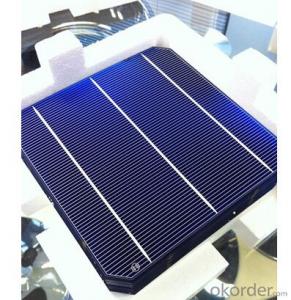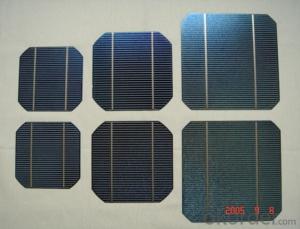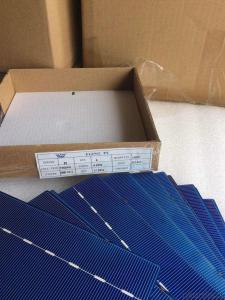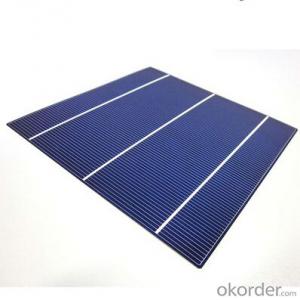Silicon Solar Cells - World-Beating Efficiency, 25-Year Lifespan, 17.2% Efficiency
- Loading Port:
- Shanghai
- Payment Terms:
- TT OR LC
- Min Order Qty:
- 1000 pc
- Supply Capability:
- 5000000 pc/month
OKorder Service Pledge
OKorder Financial Service
You Might Also Like
Brief Introduction of Solar Cells
A solar cell, is an electrical device that converts the energy of light directly into electricity by the photovoltaic effect, which is a physical and chemical phenomenon. It is a form of photoelectric cell, defined as a device whose electrical characteristics, such as current, voltage, or resistance, vary when exposed to light. Solar cells are the building blocks of photovoltaic modules, otherwise known as solar panels.
Introduction of our Company
Our company is dedicated to the research, development, and manufacture of high quality solar products and services, ranging from Photovoltaic (PV) cells, PV modules, to PV power systems. Over these years, we has been expanding solar expertise across the value chain to give our customer the advantage of international sourcing and manufacturing. Being the largest professional solar cell manufacturer in the world, we offer enhanced solar cell technology to customers with better quality and operational efficiency.
Since our founding in 1981, we evolved from a test and measurement instruments designer and manufacturer to a full service global solar company. In 1997 our Division was established. In 2000, we began producing solar cells and pioneered the manufacturing and marketing of high-quality mono and multi-crystalline silicon solar cells in Taiwan while offering our products across the globe. The business unit of test and measurement instruments was then called Instruments Division. Due to our business expansion, our official company name was changed to Industries, Inc. from the original Meter International Corporation.
In 2010, we achieved over 1.2GW production capacity with nearly 1GW total output, and reached to 2.0GW in the year of 2014. With the honor of this outstanding performance, wehas been listed in the one of the top global cell manufacturers over years.
Specifications of Polycrystalline Solar Cells
Format : 156 mm × 156 mm ± 0.5 mm
Thickness: 210 μm ±40 μm
Front (-) : 1.5mm bus bars (silver),blue anti-reflection coating (silicon nitride)
Back (+) : 2.5mm wide soldering pads (silver) back surface field (aluminium)
Efficiency (%) | Pmpp (W) | Umpp (V) | Impp (A) | Voc (V) | Isc (A) |
18.00% | 4.38 | 0.528 | 8.291 | 0.631 | 8.869 |
17.80% | 4.33 | 0.525 | 8.252 | 0.629 | 8.821 |
17.60% | 4.29 | 0.532 | 8.053 | 0.633 | 8.541 |
17.40% | 4.23 | 0.528 | 8.092 | 0.624 | 8.632 |
17.20% | 4.19 | 0.524 | 7.992 | 0.62 | 8.458 |
17.00% | 4.14 | 0.52 | 7.972 | 0.623 | 8.5 |
Advantage of Polycrystalline Solar Cells
1. Tire-1 Solar Cells’ Manufacturer Quality Guarantee. With a complete and sophisticated quality government system, our Quality Management have arrived world’s leading place. Customer can receive Tire-1 Cells Maker’s Quality Standard Products.
2. Trusted Warranty. We can supply trusted after-sales service to our customer. If our cells are found not in conformity to the specification of manufacturer, or should the inspected quantity found in shortage, or should the packing found damaged, the buyer has the right to claim to the seller. The claim, if any, should be presented to seller within 30 days after cargo's arrival date to the port, together with related inspection report and photos issued and provided by a reputable independent surveyor such as SGS.
3. World’s Leading Manufacturer Equipment. We imported the newest and leading production equipment from abroad. Advanced equipment can guarantee the stable quality of cells. Auto production line can also save labor cost which will further cut our production cost.
4. Bulk supply: With the production capacity of 500MW, we can produce large quantity every month. This can satisfy most customer requirement.
Usage of Polycrystalline Solar Cells
Solar cells are often electrically connected and encapsulated as a module. Photovoltaic modules often have a sheet of glass on the front (sun up) side, allowing light to pass while protecting the semiconductor wafers from abrasion and impact due to wind-driven debris, rain, hail, etc. Solar cells are also usually connected in series in modules, creating an additive voltage. Connecting cells in parallel will yield a higher current; our solar cells have passed IEC Certification. With high and stable quality, our cells can greatly improve the performance of Solar Modules.
Applications of Polycrystalline Solar Cells
Assemblies of photovoltaic cells are used to make solar modules which generate electrical power from sunlight, as distinguished from a "solar module" or "solar panel". A solar array generates solar power using solar energy.
Packaging & Delivery of Polycrystalline Solar Cells
Carton Box Package and Deliver by air. It should be noticed that it should be avoid of water, sunshine and moist.
Factory Picture of Solar Cells
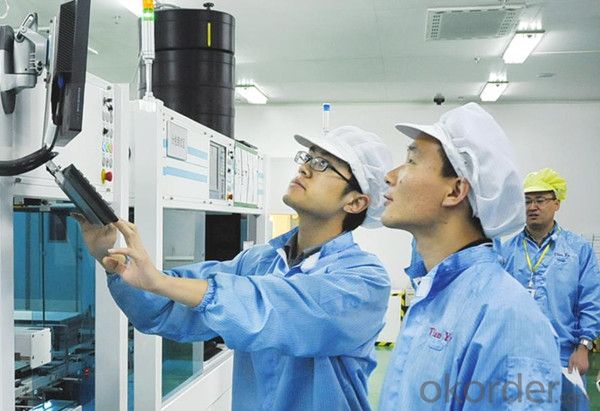
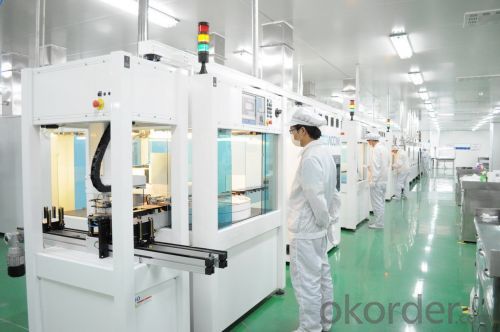
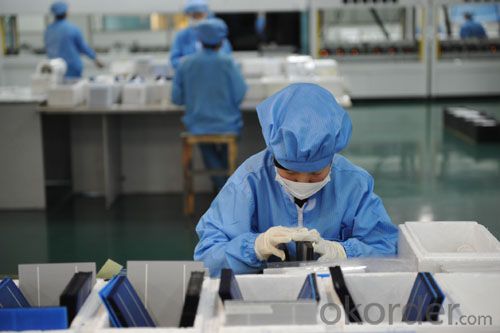
FAQ
We have organized several common questions for our clients,may help you sincerely:
1. What’s price per watt?
A: It’s depends on the quantity, delivery date and payment terms of the order. We can talk further about the detail price issue. Our products is high quality with lower price level.
2. Can you tell me the parameter of your solar cells?
We have different series of cells with different power output, both from c-si to a-si. Please take our specification sheet for your reference.
3. How do you pack your products?
We have rich experience on how to pack the panels to make sure the safety on shipment when it arrives at the destination.
4. Can you do OEM for us?
Yes, we can.
5. How long can we receive the product after purchase?
In the purchase of product within three working days, We will arrange the factory delivery as soon as possible. The perfect time of receiving is related to the state and position of customers. Commonly 7 to 10 working days can be served.
- Q: Can solar cells be used in remote or inaccessible locations?
- Yes, solar cells can be used in remote or inaccessible locations. Solar cells are a reliable and sustainable source of energy that can be installed in areas with limited infrastructure or access to the grid. They are often used to power remote buildings, off-grid communities, and even in space missions. The portability and versatility of solar panels make them an ideal solution for providing electricity in remote or inaccessible locations.
- Q: Can solar cells be integrated into building materials?
- Yes, solar cells can be integrated into building materials. This practice, known as building-integrated photovoltaics (BIPV), involves embedding solar cells into various architectural elements such as windows, roofs, or facades. BIPV allows for the generation of renewable energy without the need for additional structures, maximizing energy efficiency and aesthetic integration within buildings.
- Q: Can solar cells be used in telecommunications infrastructure?
- Yes, solar cells can be used in telecommunications infrastructure. They can power various components of the infrastructure such as cell towers, base stations, and remote equipment. Solar cells provide a reliable source of renewable energy that can be harnessed to meet the power requirements of telecommunications systems, particularly in remote and off-grid locations. This helps reduce dependence on traditional grid electricity and lowers the carbon footprint of the infrastructure.
- Q: How much do solar cells cost?
- The cost of solar cells can vary depending on various factors such as the type and size of the solar cell, location, installation costs, and any additional equipment needed. On average, solar cells can range from a few hundred dollars for small, portable units to thousands of dollars for larger, more efficient panels. It is important to consider the long-term savings and benefits of solar energy when evaluating the cost.
- Q: Can solar cells be used in public transportation systems?
- Yes, solar cells can be used in public transportation systems. They can be integrated into vehicles such as buses, trams, and trains to generate electricity from sunlight, reducing reliance on conventional energy sources and lowering carbon emissions. Solar-powered public transportation systems have been successfully implemented in various cities around the world, demonstrating the feasibility and benefits of using solar cells in this sector.
- Q: Can solar cells be used for powering military bases?
- Yes, solar cells can definitely be used for powering military bases. Solar energy is a reliable and sustainable source of power that can be harnessed through the use of solar cells. Implementing solar panels on military bases can help reduce dependence on traditional fossil fuel-based energy sources, increase energy security, and provide a more environmentally friendly and cost-effective solution for powering military operations.
- Q: Can solar cells be used in powering autonomous vehicles?
- Yes, solar cells can be used to power autonomous vehicles. Solar panels can be installed on the exterior or integrated into the body of the vehicle to capture sunlight and convert it into electricity. This renewable energy source can help supplement the vehicle's power needs, extending its range and reducing its reliance on fossil fuels. Additionally, advancements in solar technology and efficiency are making it more feasible to use solar power as a primary or secondary energy source for autonomous vehicles.
- Q: What is the impact of solar cell installations on property values?
- Solar cell installations generally have a positive impact on property values. Studies have shown that homes equipped with solar panels tend to sell for higher prices and at faster rates compared to homes without solar. The cost-saving benefits of solar energy, such as reduced electricity bills, attract potential buyers and increase the desirability of the property. Additionally, the environmental benefits associated with solar power contribute to the positive perception of the home, further boosting its value.
- Q: Can solar cells be used for powering shopping malls?
- Yes, solar cells can be used for powering shopping malls. Solar panels can be installed on the roofs or parking lots of shopping malls to generate electricity from the sun. This renewable energy source can help reduce the mall's reliance on traditional grid power and lower their carbon footprint. Additionally, the excess energy produced during off-peak hours can be stored or sold back to the grid, making solar cells a viable option for powering shopping malls.
- Q: Can solar cells be used in cloudy weather?
- Yes, solar cells can still be used in cloudy weather, although their efficiency may be reduced. Cloud cover reduces the amount of sunlight available, which can result in a decrease in power output from solar cells. However, solar cells can still generate electricity from diffuse light, so they can still produce some energy even in cloudy conditions.
Send your message to us
Silicon Solar Cells - World-Beating Efficiency, 25-Year Lifespan, 17.2% Efficiency
- Loading Port:
- Shanghai
- Payment Terms:
- TT OR LC
- Min Order Qty:
- 1000 pc
- Supply Capability:
- 5000000 pc/month
OKorder Service Pledge
OKorder Financial Service
Similar products
Hot products
Hot Searches
Related keywords
